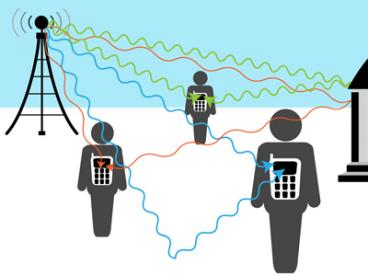Introduction

There is growing demand for wireless bandwidth created by the increasing prevalence of wireless devices and emerging rich media applications. Unfortunately, wireless spectrum is a limited resource. This led to a recent initiative to move TV bands from analog to digital, which made 100-250 MHz of digital whitespace bandwidth available for unlicensed access. Technologies utilizing white space spectrum need to dynamically detect frequencies that are occupied by existing devices and avoid interfering with them. Similar requirements are necessary for ultra-wideband (UWB) radios that share unlicensed spectrum with other narrowband technologies (such as 802.11 a/b/g/n, Zigbee).
SWIFT
Wide-band systems need to allow narrowband technologies, who they share spectrum with, to achieve their normal performance, without compromising on throughput or range of the wideband network. SWIFT (Split Wideband Interferer Friendly Technology) is a system where high-throughput wideband nodes are shown in a working deployment to coexist with unknown narrowband devices, while forming a network of their own.
SWIFT focuses on sharing spectrum when narrowband devices are many, and their signal patterns are unlikely to be known. Unlike other cognitive proposals, which attempt to find a single unused band which they may opportunistically use, SWIFT aggregates the bandwidth of many such bands to maximize throughput.
FARA
There has been a shift to wider bands triggered by cognitive communication both in white spaces and unlicensed bands. For instance, UWB radios have been proposed as a high bandwidth solution in the unlicensed band. Technology advances such as 802.11n are also pushing for wider frequency bands, for instance from 20 MHz to 40 MHz. This shift to wider bands presents an opportunity to exploit frequency diversity. Specifically, frequencies that are far from each other in the wide band spectrum have significantly different SNRs, and good frequencies differ across sender-receiver pairs. FARA, a combined frequency-aware rate adaptation and MAC protocol, aims to address this problem. FARA makes three departures from conventional wireless network design:
- It presents a scheme to robustly compute per-frequency SNRs using normal data transmissions.
- It enables a sender to adapt the bitrate independently across frequencies based on these per-frequency SNRs.
- It introduces a MAC protocol that allocates to a sender-receiver pair the frequencies that work best for that pair.